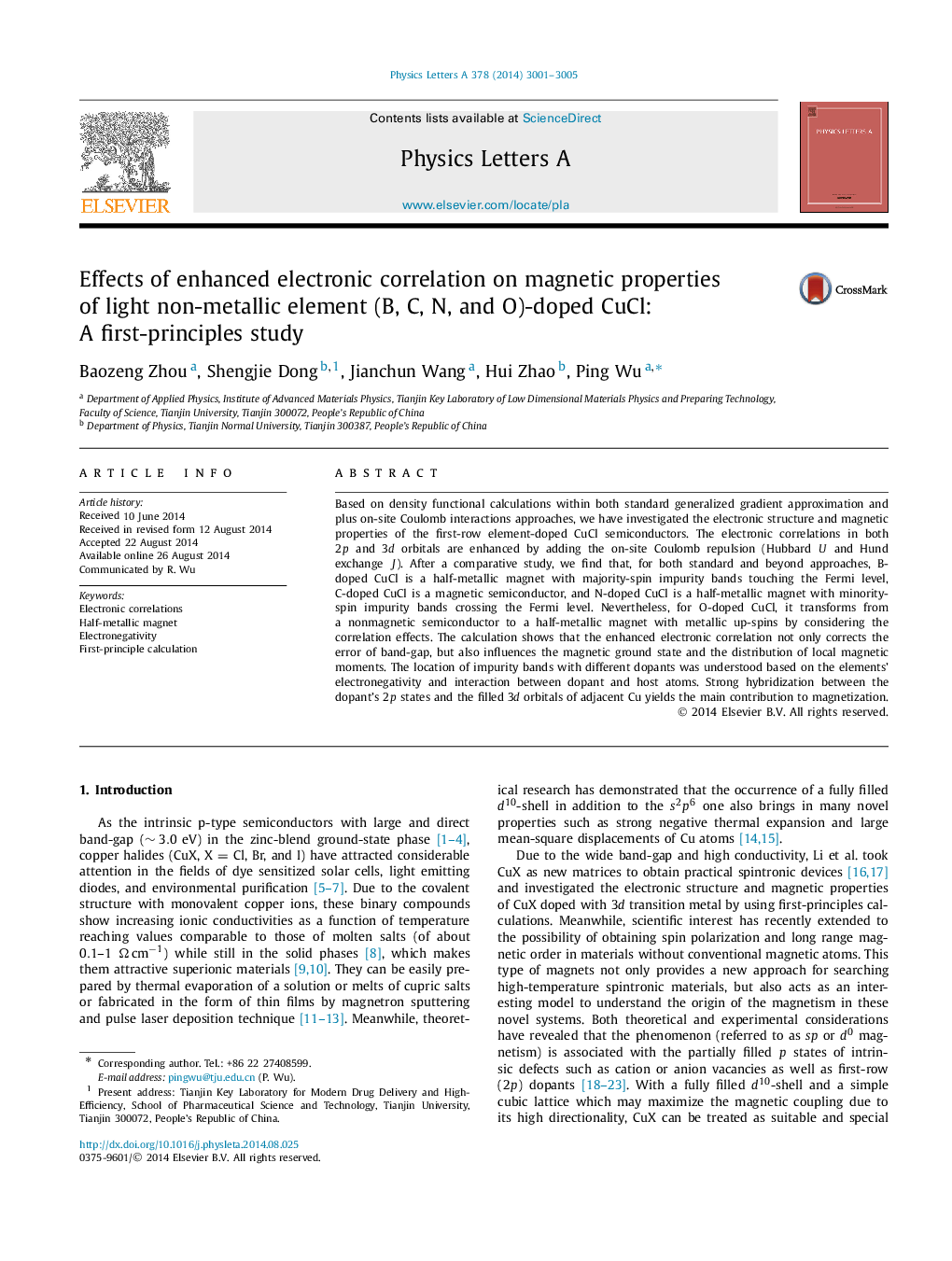| کد مقاله | کد نشریه | سال انتشار | مقاله انگلیسی | نسخه تمام متن |
|---|---|---|---|---|
| 1864018 | 1037697 | 2014 | 5 صفحه PDF | دانلود رایگان |

• The magnetic properties of the first-row element-doped CuCl are investigated.
• The electronic correlations in both 2p and 3d orbitals are taken into account.
• Strong p–d hybridization yields the main contributions to magnetization.
• The enhanced electronic correlation may influence the magnetic ground state.
Based on density functional calculations within both standard generalized gradient approximation and plus on-site Coulomb interactions approaches, we have investigated the electronic structure and magnetic properties of the first-row element-doped CuCl semiconductors. The electronic correlations in both 2p and 3d orbitals are enhanced by adding the on-site Coulomb repulsion (Hubbard U and Hund exchange J). After a comparative study, we find that, for both standard and beyond approaches, B-doped CuCl is a half-metallic magnet with majority-spin impurity bands touching the Fermi level, C-doped CuCl is a magnetic semiconductor, and N-doped CuCl is a half-metallic magnet with minority-spin impurity bands crossing the Fermi level. Nevertheless, for O-doped CuCl, it transforms from a nonmagnetic semiconductor to a half-metallic magnet with metallic up-spins by considering the correlation effects. The calculation shows that the enhanced electronic correlation not only corrects the error of band-gap, but also influences the magnetic ground state and the distribution of local magnetic moments. The location of impurity bands with different dopants was understood based on the elements' electronegativity and interaction between dopant and host atoms. Strong hybridization between the dopant's 2p states and the filled 3d orbitals of adjacent Cu yields the main contribution to magnetization.
Journal: Physics Letters A - Volume 378, Issue 40, 14 August 2014, Pages 3001–3005